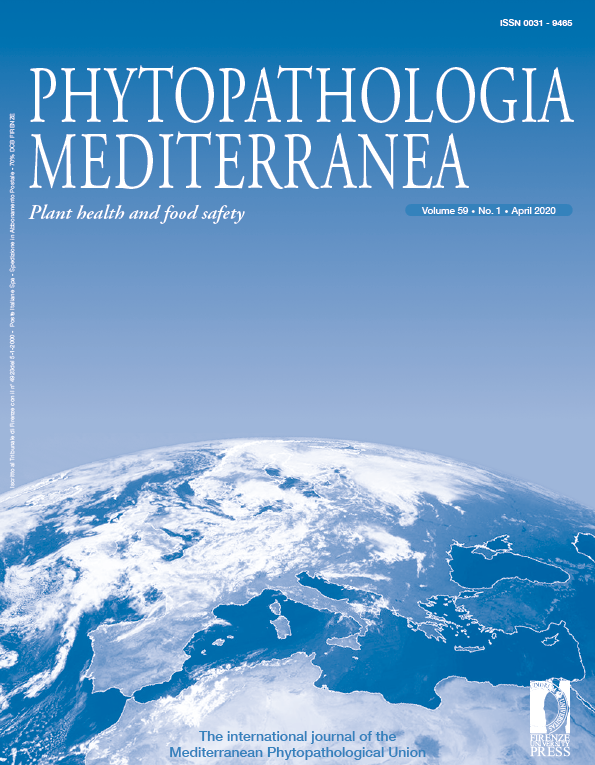Published 2020-03-14
Keywords
- Fig cuttings,
- pathogenicity,
- molecular analysis,
- Botryosphaeriaceae
How to Cite
Abstract
During June 2018, several symptomatic fig (Ficus carica) cuttings, showing twig blight, subcortical discolouration and apical dieback were collected from a nursery in Catania province, Sicily (Italy). Isolations from diseased tissue consistently showed the presence of the same fungal colony. Morphology of the fungal isolates together with sequence data of the nuclear rDNA internal transcriber spacer (ITS) region, translation elongation factor 1-alpha (tef1) gene and partial beta-tubulin (tub2) gene of representatives isolates revealed the presence of the fungus Neofusicoccum parvum. Pathogenicity tests were conducted by inoculating fig cuttings with mycelial plugs. After 10 days, the inoculated plants developed cankers similar to those observed in the greenhouse and after 26 days all inoculated plants were dead. To the best of our knowledge, this is the first report worldwide of N. parvum causing disease on this host.






